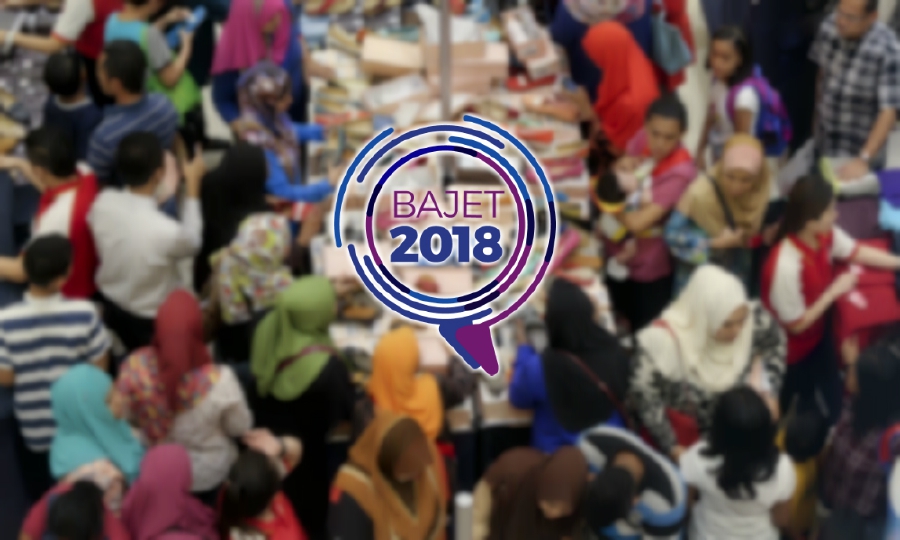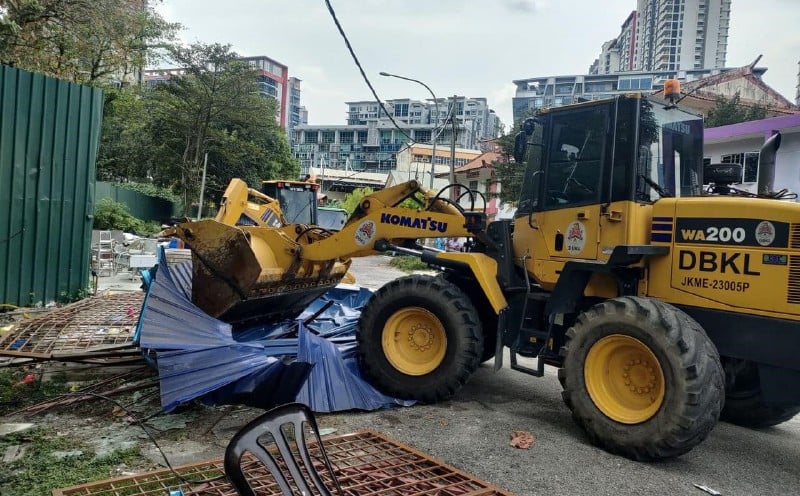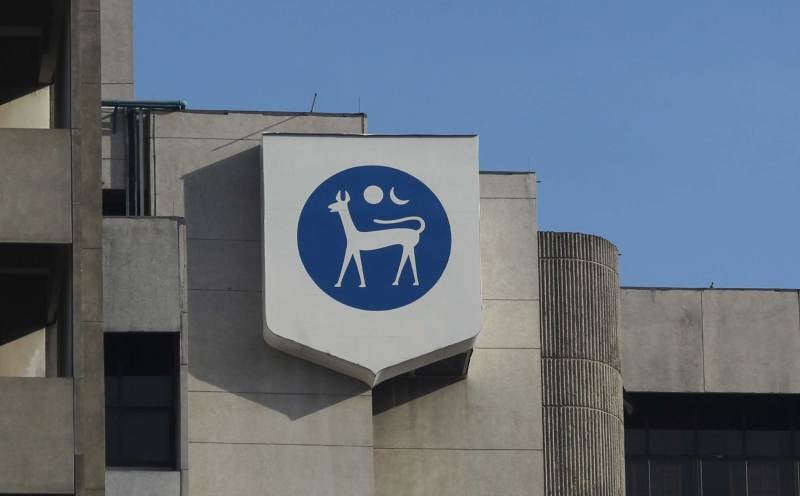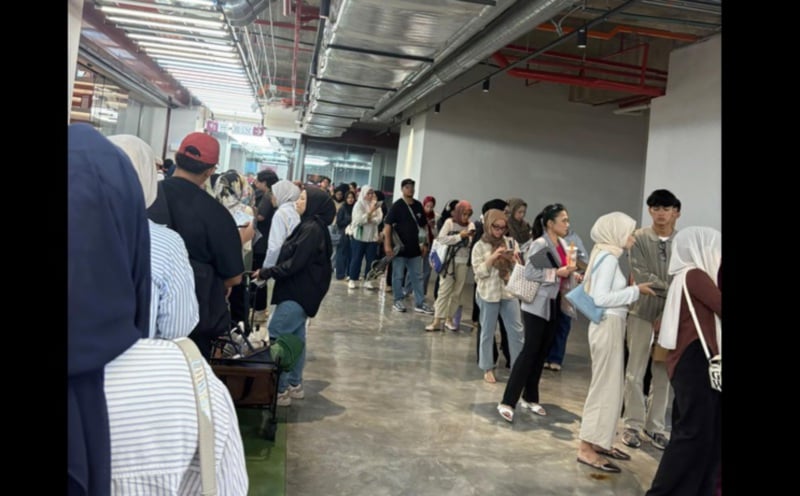MALAYSIANS are now awaiting the unveiling of the 2018 National Budget which Prime Minister Datuk Seri Najib Razak is scheduled to table in Parliament at 3.30pm on Friday.
As usual, the budget has always attracted a lot of attention not only among businessmen, investors, civil servants and the like but also among the general members of the public.
The coming budget, in particular, will certainly generate a lot more interest as the country is now in the last round of its preparations for the 14th General Election which must be held before August next year.
Thus, observers and analysts are in unison in labelling the 2018 budget as an ‘election budget’. In line with this, the general expectation of the rakyat is relatively higher than usual with their ‘wish list’ becoming longer than usual.
A lot of people are, this time around, looking forward to more so-called ‘goodies’ in the form of incentives, tax cuts or even outright gifts such as bonuses for civil servants and pensioners, increased BR1M payment, an increase in the quantum of fishermen’s allowance or higher input subsidies for farmers.
As a leader of a responsible and caring government, Datuk Seri Najib, who is also the Finance Minister, would certainly love to please and satisfy the wishes of every strata of the society.
However, everyone knows that this is humanly impossible. It must be appreciated that in drawing up the budget document, the government has to take into consideration the amount of revenue projected to be collected for the year in question and weigh it against the wishes of the people while, at the same time, ensuring the sustenance of the economic growth momentum.
Although the country’s economic performance has been impressive for the last few years, with this year’s real gross domestic product (GDP) growth to reach 5.4 per cent compared to 4.2 per cent last year as per the recent acknowledgement by the International Monetary Fund (IMF), the government will still have to maintain its strict fiscal discipline and the promised gradual reduction of budget shortfalls to a near balance by the year 2020.
This year’s deficit stands at 3 per cent of GDP. Coupled with that, the global geo-political scenario still remains uncertain despite the current clear indications of an improving world economic condition.
Whatever the case may be, one thing which the budget is most likely to address is the issue of the rising cost of living which of late has been the subject of rumblings, especially among the bottom 40 per cent (B40) and middle 40 per cent (M40) of the households.
This has always been the emphasis of the previous budgets. This time around, the government is expected to continue to introduce measures to relieve the people’s burden as a result of the rising costs. This is very much in line with the government’s strategy of taking care of the rakyat’s economy.
Nevertheless, no one should expect a miracle. Prices will rise year in and year out with or without the introduction of new taxes. In line with the price increase, cost will definitely go up, including the cost of living.
But what actually constitutes the cost of living? How is it defined? How does one measure it?
Economically speaking, it is closely knitted with the prevailing Consumer Price Index or CPI.
Currently, the items included in the CPI basket are categorised generally as follows: transport; food and non-alcoholic beverages; restaurants and hotels; health; furnishings, household equipment and routine household maintenance; housing, water, electricity, gas and other fuels; education; miscellaneous goods and services; recreation services and culture; alcoholic beverages and tobacco; clothing and footwear and communication.
The items classified under the above categories are generally the needs of an average person which ought to be fulfilled in order to sustain a decent living. (Items) other than these are not considered as ‘needs’ but rather ‘wants’, giving the option of whether or not one ought to satisfy those ‘wants’, depending on his or her financial affordability.
The latest figures released by the Department of Statistics Malaysia show that there is an overall increase in the CPI index at a rate of 3.7 per cent to 119.9 in August this year from 115.6 in the corresponding month of the preceding year.
Among the major groups which recorded increases are the indices for transport (+11.7%), food and non-alcoholic beverages (+4.3%), restaurants and hotels (+2.8%), health (+2.7%), furnishings, household equipment and routine household maintenance (+2.7%) and housing, water, electricity, gas and other fuels (+2.4%).
As stated earlier, a general increase in cost is a natural phenomenon in a free market economy. More often than not it is caused by factors beyond the control of the authorities.
In going through the list of the items, one should also ask oneself how often one travels (apart from work-related travel), dines at restaurants, stays in hotels or changes house furniture?
It may not be too far-fetched to assume that much of the current complaints over the so-called ‘high cost of living’ is precipitated by the rising cost of food, including fish, which the government has acknowledged and is taking continuous measures to mitigate their impact, especially on the lower and middle income groups.
The increase in food prices has nothing to do with the GST, as claimed by some, because the affected items are either tax-exempt, zero-rated or subsidised.
The introduction of BR1M, the Kedai Rakyat 1Malaysia, the 1Malaysia Clinics and a host of other programmes under the Social Safety Net undertaken by various government agencies are meant to relieve the burden of the said groups.
In the matter of transportation, the completion of the MRT Sungai Buloh-Kajang Line last July should have taken care of the transport woes of the Klang Valley poor residents.
Bearing in mind those measures taken by the government so far, it is therefore fair to expect the people to also do their part in reducing their burden.
They can do so by enhancing their earning capacity, either through higher productivity, increased efficiency or even additional part-time jobs.
If possible, they should also try to reduce their expenditure on ‘non-cost of living items’ or at least postpone temporarily the desire to satisfy their ‘wants’.
Some may argue that the latest smart phones, celebrity ‘tudung’, WiFi subscription, an entire subscription of Astro packages and the like are actually necessary and essential requirements of today’s living in line with the country’s rapid march towards a high-income status.
Well, if need be, be it so. But it must be borne in mind that these items are not cost of living items. It is essentially lifestyle requirements and the cost incurred along with it should be referred to as ‘cost of lifestyle’.
In assessing the real cost of living, it is possible that there may be a tendency for some to mix both, the sum of which could be alarming.
To avoid such a possible confusion, perhaps it is now better and wiser for the government to come out with a new formula or term to describe the nature of the current concern pertaining to costs incurred by Malaysians in their daily life.
Perhaps it can be called ‘Living Expenses’, derived by adding the cost of living and the lifestyle cost. The formulation should appear as follows:
Cost of Living + Lifestyle Cost = Living Expenses.
The above is only a suggestion. Other terms can be thought of and popularised so long as they reflect the real situation. - BERNAMA
Tan Sri Abdul Rahman Sulaiman is the deputy president of the Council of Former Elected Representatives (Mubarak).

















